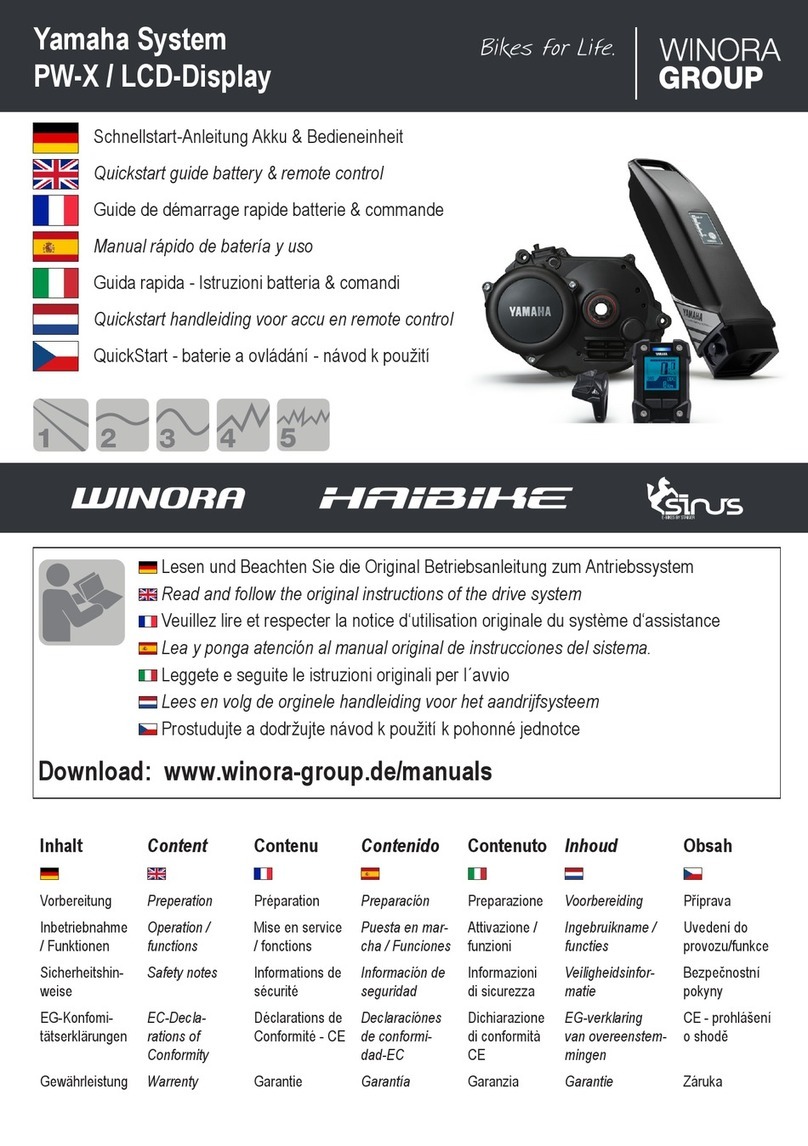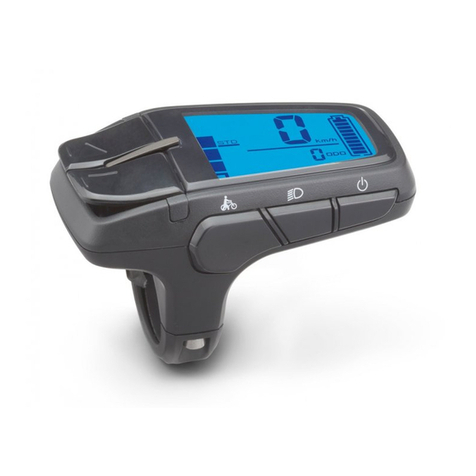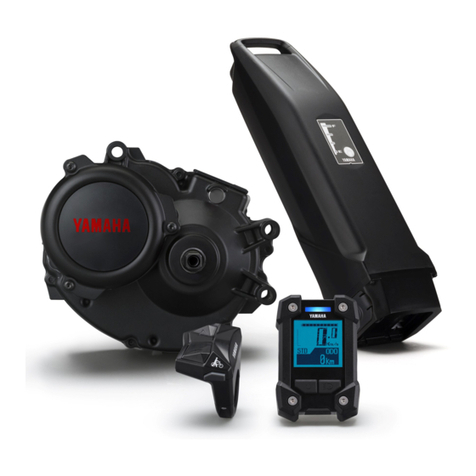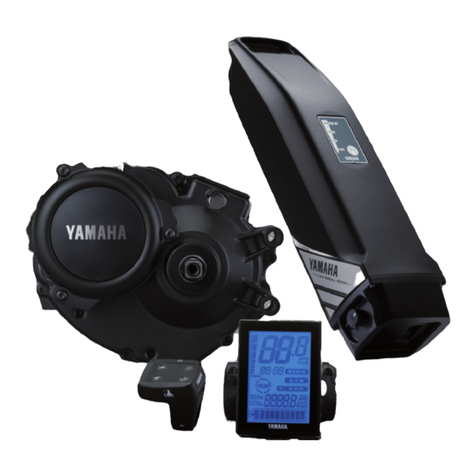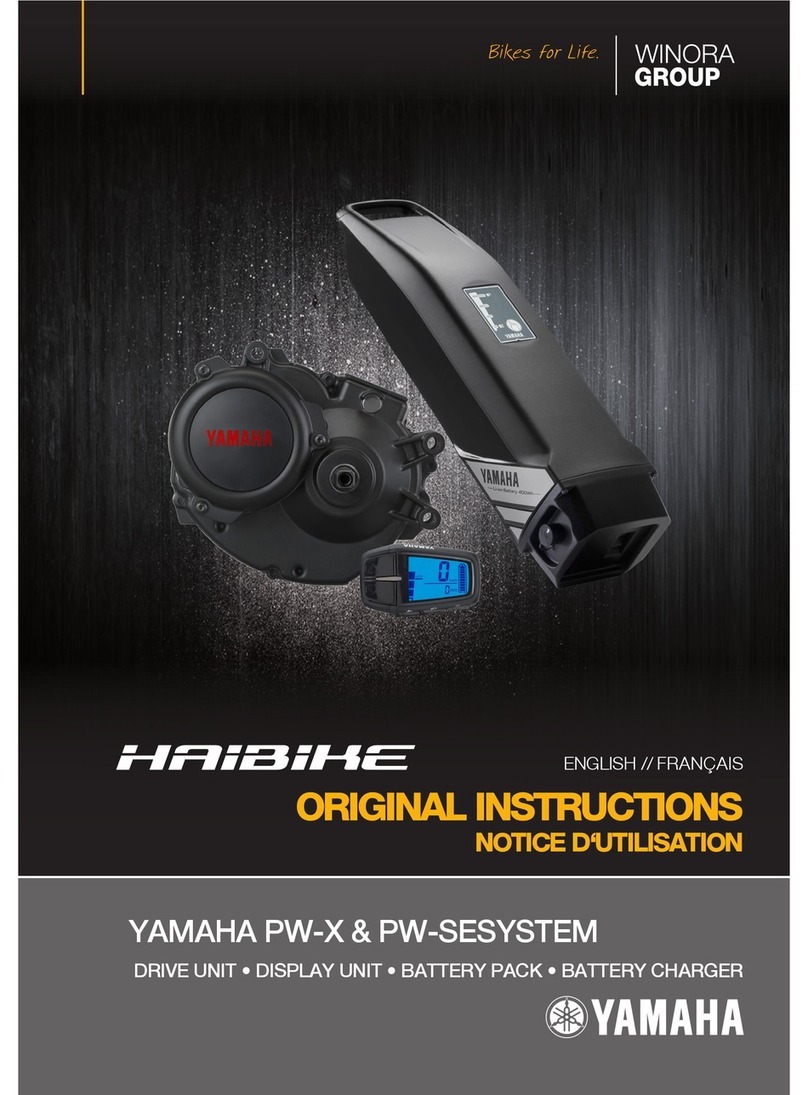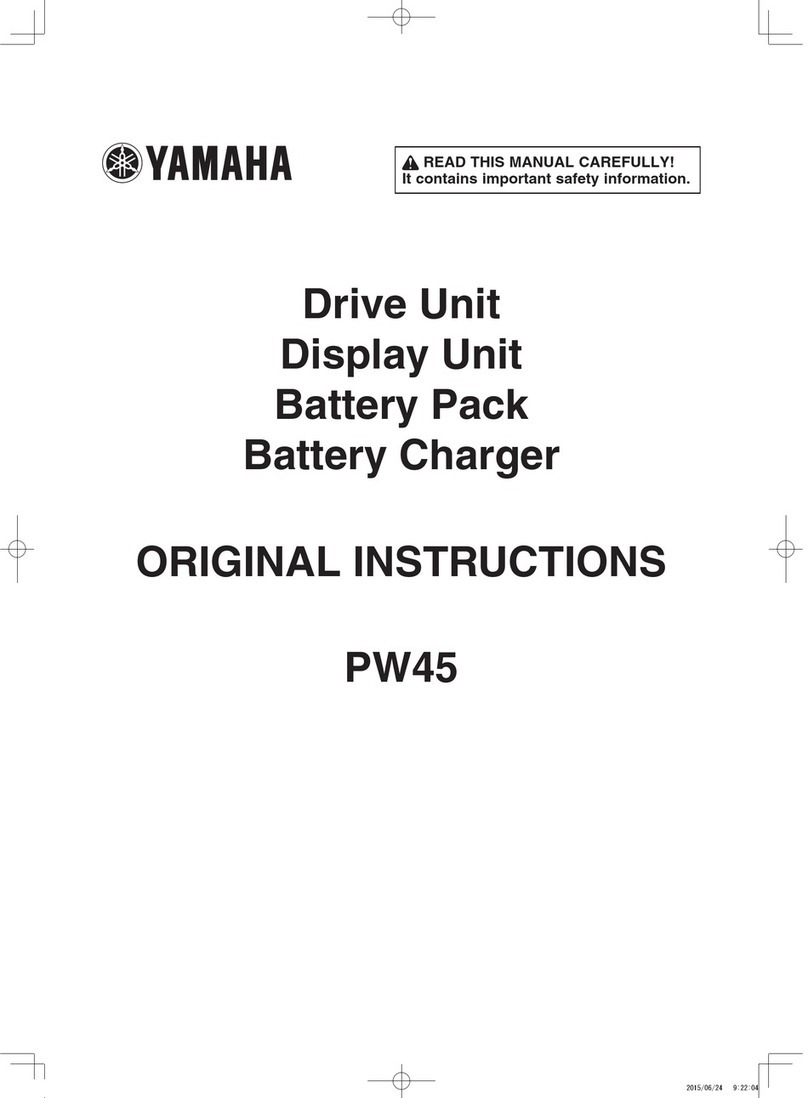
Contents
General warning p. 1
1. Electric bike components p. 2
A. Introduction p. 2
B. Consumer information p. 2
Drive Unit data recording p. 2
C. Locationofthewarningandspecicationlabels p. 3
D. Description p. 6
E. e-Bike Systems p. 7
The e-Bike Systems are designed to give you the optimal amount of power
assist. p. 7
Multiple power assist modes are available. p. 7
Conditions that could decrease range (remaining assist distance) p. 8
F. Safety information p. 9
G. Instrument and control functions p. 12
Display Unit (Display A) p. 12
Display Unit (Display B) p. 19
H. Battery Pack and charging procedure p. 76
Appropriate charging environments p. 77
Inappropriate charging environments and solutions p. 77
Charging the Battery Pack mounted on the bicycle (Rear Carrier Battery) p. 78
Charging the Battery Pack mounted on the bicycle (Down Tube Battery) p. 78
Charging the Battery Pack mounted on the bicycle (Multi Location Battery,
External Crossover Battery) p. 78
Charging the Battery Pack removed from the bicycle p. 80
Reading the charging status for Battery Pack p. 86
Reading the charging status for Display Unit (Applies only to models
equipped with the Multi Location Battery.) p. 88
Charging time guidelines p. 91
I. Checking the residual battery capacity p. 92
Residual battery capacity indicator display and estimate of residual battery
capacity for Display Unit p. 92
Display of the battery capacity indicator lamps and the estimate of the
residual battery capacity p. 95
J. Pre-operation check p. 98
K. Cleaning, maintenance and storage p. 98
Caring for the Battery Pack p. 98
Maintenance for the Drive Unit p. 99
Storage p. 99
Long storage period (1 month or longer) and using it again after a long
storage period p. 99
L. Transport p. 99
M. Disposal p. 100
N. Simplieddeclarationofconformity p. 100
O. Troubleshooting p. 101
e-Bike Systems p. 101
Walk assist function p. 108
Power supply of external devices via USB connection p. 109
Wireless communication p. 110
Battery Pack and Battery Charger p. 111
P. Specications p. 115






